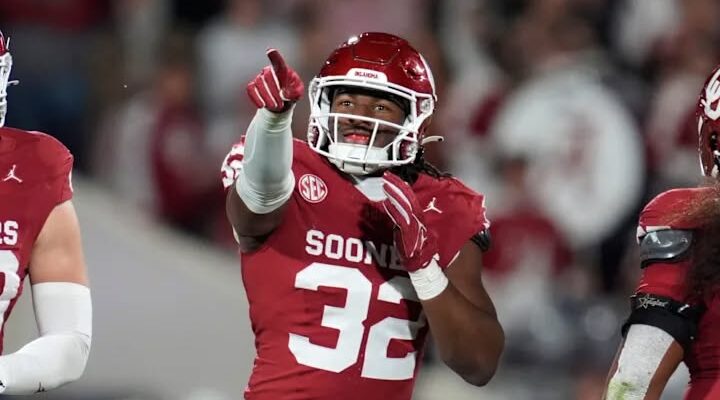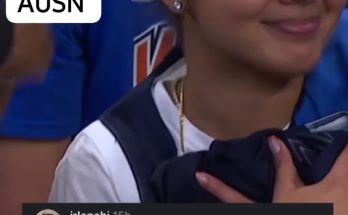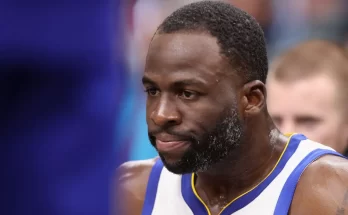The Oklahoma Sooners’ defensive line has indeed solidified its reputation as one of the nation’s premier units, a recognition underscored by its consistent high rankings from analytical powerhouses like Pro Football Focus (PFF). Going into the 2025 college football season, this status as a top-tier defensive front is not merely an accolade but a foundational pillar of Oklahoma’s aspirations, especially as they embark on their inaugural journey in the brutally competitive Southeastern Conference (SEC).
For years, the Oklahoma Sooners were known primarily for their high-octane, prolific offenses. While offensive fireworks often captured headlines, a consistent Achilles’ heel in the modern era was often the defensive side of the ball, particularly the ability to generate consistent pressure and stop the run against top-tier opponents. This narrative began to shift with the return of Brent Venables, a defensive mastermind, to Norman as head coach. His philosophy, rooted in aggressive, disciplined, and disruptive defense, prioritized building a formidable defensive line from day one.
Pro Football Focus (PFF) is renowned for its detailed, play-by-play analysis that goes beyond traditional box scores. Their grading system evaluates individual player performance on every snap, providing nuanced insights into positional strength. When PFF recognizes a unit as one of the best, it speaks volumes about several key aspects:
- Individual Talent and Production: PFF’s high grades reflect the consistent individual excellence of multiple players within the defensive line rotation. This isn’t just about one or two stars; it’s about a collective group of players who are regularly winning their matchups, shedding blocks, and making plays.
- Disruption and Pressure: A top-ranked defensive line excels at disrupting offensive schemes. This includes generating consistent pass rush (sacks, pressures, hurries), forcing hurried throws, and collapsing the pocket. It also involves stopping the run at or behind the line of scrimmage, blowing up gaps, and controlling the line of scrimmage.
- Versatility and Depth: The best defensive lines are not one-trick ponies. They feature players who can execute various roles (3-technique, 0-technique, 5-technique, edge rusher) and are deep enough to rotate players without a significant drop-off in production. This is crucial for maintaining effectiveness throughout a long game and a grueling season.
- Scheme Fit and Coaching: PFF’s analysis implicitly credits the coaching staff for putting players in positions to succeed and for developing their talent. Brent Venables’s defensive schemes are designed to unleash aggressive defensive line play, and his defensive line coach (Miguel Chavis and Todd Bates, for example, during Venables’s tenure) plays a critical role in honing individual skills.
Going into the 2025 season, the PFF recognition would be a culmination of excellent recruiting, player development, and schematic execution. Key players contributing to this reputation would include:
- Established Veterans: Players who have been in the program for several years, honed their skills, and are now performing at an elite level. These are often the leaders who set the tone.
- Impact Transfers: Oklahoma has strategically utilized the transfer portal to bring in immediate impact players on the defensive line. These experienced additions provide immediate depth and talent. (e.g., Rondell Bothroyd, Dasan McCullough type transfers in previous years). For the 2025 season, players acquired in the 2024-2025 portal cycle would be crucial.
- Rising Stars: Younger players (freshmen or sophomores from the 2024 class) who have quickly ascended and are showing flashes of elite potential.
Specific positions within the defensive line contribute differently:
- Defensive Tackles/Interior Linemen: These players (e.g., projected starting defensive tackles for 2025) are crucial for stopping the run, collapsing the pocket from the inside, and occupying blockers to free up linebackers and edge rushers. PFF would grade them highly on their ability to penetrate, shed blocks, and generate interior pressure.
- Edge Rushers/Defensive Ends: These players (e.g., projected starting defensive ends for 2025) are responsible for generating pass rush from the outside, setting the edge against the run, and containing quarterbacks. PFF would highlight their pass-rush win rates, pressures, sacks, and ability to disrupt plays in the backfield.
- Oklahoma’s defensive line being recognized as one of PFF’s best units is particularly significant as they transition to the SEC. This move represents the ultimate test for any program, especially for defensive units:
- Elite Offensive Lines: The SEC consistently fields the nation’s best offensive lines, packed with future NFL talent. A top PFF grade suggests Oklahoma’s defensive line has the physical and technical prowess to compete against these formidable units.
- Top-Tier Quarterbacks and Running Backs: The SEC is a haven for elite quarterbacks, dynamic running backs, and explosive playmakers. A dominant defensive line is crucial for disrupting timing, pressuring passers, and stifling run games against such talent.
- Week-to-Week Grind: There are no “easy” games in the SEC. Every conference matchup is a physical battle, and the defensive line will be challenged consistently. A deep and highly-graded unit is essential for withstanding the wear and tear of a brutal schedule.
- National Championship Aspirations: To contend for SEC championships and ultimately College Football Playoff berths, a team must have a defense that can win games, particularly when the offense sputters or faces equally talented opponents. A PFF-recognized elite defensive line provides that foundation.
The PFF recognition provides a powerful recruiting tool for Brent Venables and his staff, particularly for future defensive line prospects:
- Proof of Development: It demonstrates that Oklahoma isn’t just recruiting talent; they are successfully developing it. Young defensive linemen can see a clear path to becoming highly productive, NFL-caliber players under Venables and his coaching staff.
- Peer Recognition: Recruits pay attention to these metrics. Being part of a “PFF best unit” is a tangible sign of excellence and a draw for players who want to compete at the highest level.
- Scheme Fit: For players who thrive on aggressive, attacking defense, Oklahoma’s system is an ideal fit, and the PFF grades validate that the scheme produces results.
- Positive Momentum: A strong defensive line contributes to winning, and winning creates further recruiting momentum.
In conclusion, as the Oklahoma Sooners entered the 2025 college football season, the national recognition of their defensive line as one of PFF’s best units was a source of immense pride and a critical competitive advantage. This distinction reflects years of dedicated recruiting, rigorous player development, and the implementation of a defensive philosophy under Brent Venables that prioritizes disruption and dominance in the trenches. Facing the formidable challenge of the SEC, this elite defensive front is not just a strength; it is the linchpin of Oklahoma’s aspirations for sustained success and a return to national championship contention.



